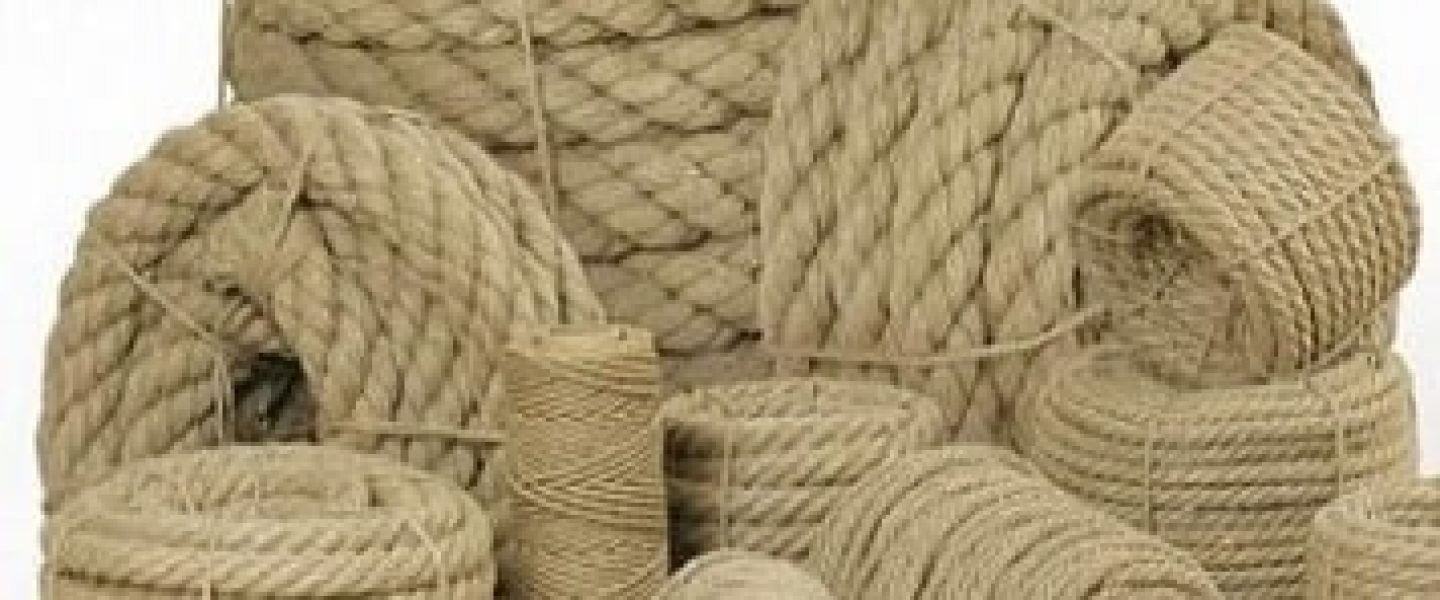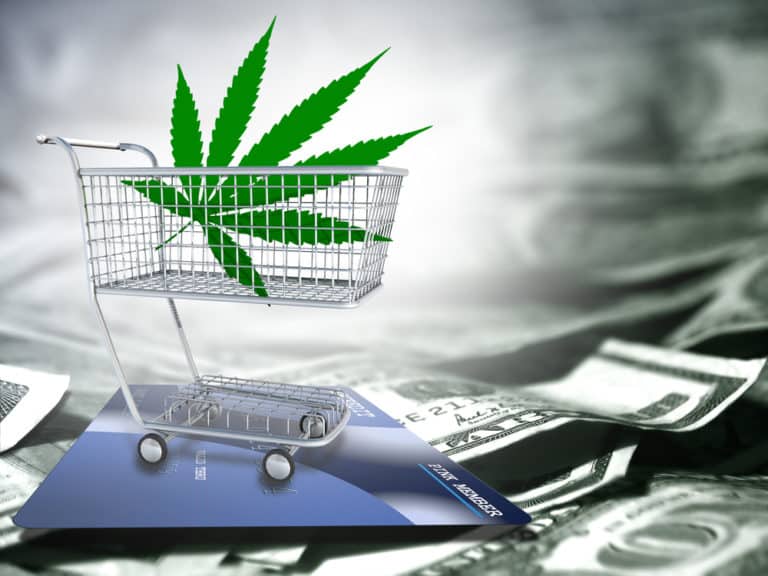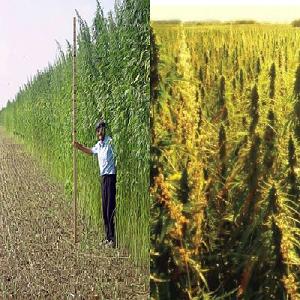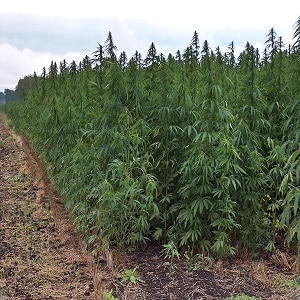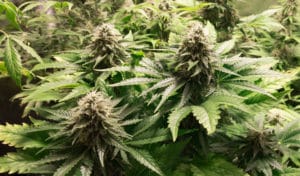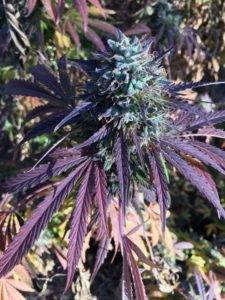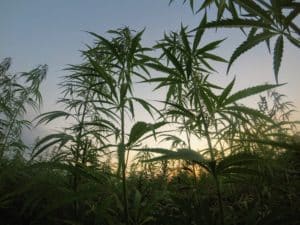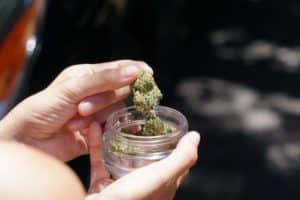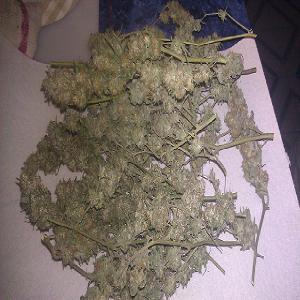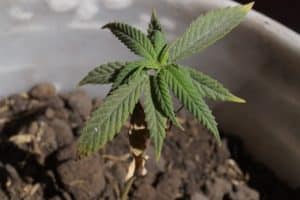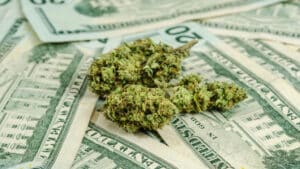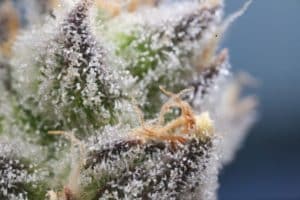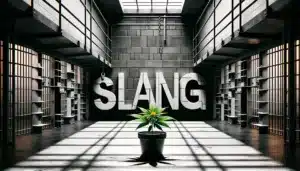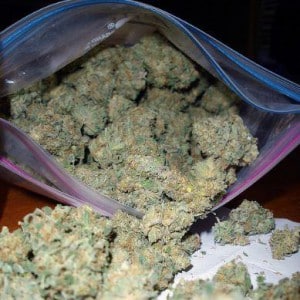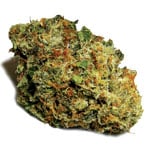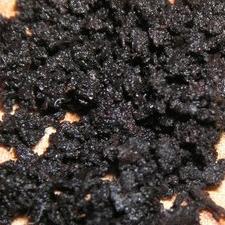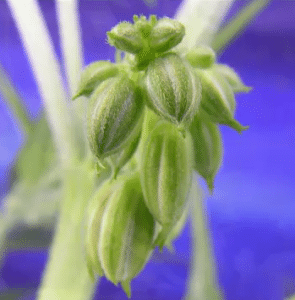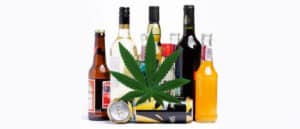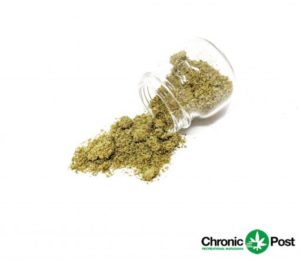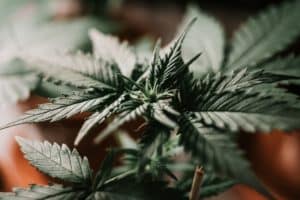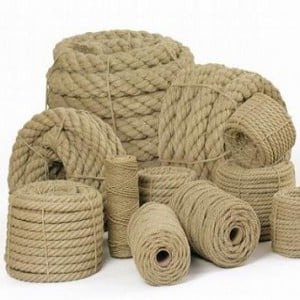 Hemp Opponents Need To Do More Research
Hemp Opponents Need To Do More Research
Hemp is one of the most versatile plants on the planet. Hemp can be used for many things, including textiles, rope, paper, and building materials. Hemp seed is increasingly used for food, feed, and oil. Hemp seed oil is low in saturated fats and can be used in pharmaceuticals, cosmetics, inks, lubrication, household detergents, varnishes, resins, and paints. Hemp is a great source for cellulosic ethanol production.
Despite hemp’s obvious benefits, the federal government considers it to be the devil. Most states have outlawed industrial hemp production. For the handful of states that have legalized hemp production, such as my home state of Oregon, there is still no hemp industry because those states cannot act until the federal government pulls it’s head out of it’s you know what. If a state tried to buck the trend and have large hemp fields, which are required to turn a profit from hemp unlike marijuana, then the DEA would come in and shut it down like they did at the Lakota Nation Reservation. If native tribe’s that have sovereignty can’t grow hemp (which is INSANE), the feds would never allow a state to do so.
One of my favorite movies of all time is Hempsters. I have a confession to make — I didn’t know that much about hemp until I saw this movie. However, before people freak out and start e-mailing me anything and everything they can about hemp, I am proud to say that I feel like a hemp expert after watching this movie. It really gets into the science and industry that go along with hemp cultivation and usage.
I have tried to dig for solid hemp information for years now, but I always ran into dead ends. Sure, there are countless websites and articles dedicated to the fact that hemp is wonderful, and awesome, and that if we could only tap into it, it would save the world. However, hard facts, statistics, and examples were always absent.
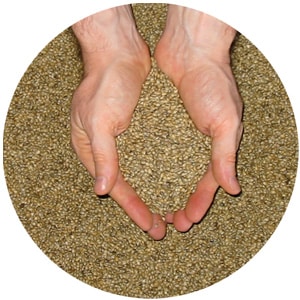 I’m the kind of math nerd that took Probability and Statistics in college as an elective, and I’m ALWAYS skeptical of what people are trying to put out there when there’s no raw data to back it up. I was beginning to become disheartened about hemp, wondering if it really was as awesome as so many people believed. I’m happy to say that after watching the Hempsters movie, I can say with confidence that hemp can save the world, and I have the raw facts to back up my statement.
I’m the kind of math nerd that took Probability and Statistics in college as an elective, and I’m ALWAYS skeptical of what people are trying to put out there when there’s no raw data to back it up. I was beginning to become disheartened about hemp, wondering if it really was as awesome as so many people believed. I’m happy to say that after watching the Hempsters movie, I can say with confidence that hemp can save the world, and I have the raw facts to back up my statement.
I love how Hempsters presented all of the arguments of the opposition, and then smashed those arguments with logic and facts. Below are the arguments that were presented in the film, as well as a few more that I dug up on the web. Below the arguments I have included undeniable proof that blows those weak arguments out of the water. If you have other arguments that you have hard in opposition to hemp, and want to disprove them, please do so in the comments section so that others can benefit from your knowledge. That way others can be educated when they have to debate a non-believer or enlighten someone that is on the fence about hemp:
Hemp is no different than marijuana.
“Industrial hemp is bred to maximize fiber, seed and/or oil, while marijuana varieties seek to maximize THC (delta 9 tetrahydrocannabinol, the primary psychoactive ingredient in marijuana). Industrial hemp has a THC content of between 0.05 and 1%. Marijuana has a THC content of 3% to 20%.” according to the North American Industrial Hemp Council. As most hemp activists will point out, marijuana is not the same as hemp, just as popcorn and corn whiskey are not the same thing. Yes they come from the same plant, but that is where the similarities end. If hemp is marijuana, than poppy seed bagels are morphine; it’s the same logic.
Legalizing hemp is the same as trying to legalize marijuana.
A classic move of politicians that want to maintain the status quo through scare tactics is to bunch causes together and refuse to differentiate between the goals of the causes involved. I have been a marijuana activist far longer than I have been a hemp activist, and I will be the first to tell you, people that are ‘hemp only activists’ such as the Hemp Industries Association do not believe in marijuana legalization. The people leading the hemp fight are farmers that want to grow a non-intoxicating crop like their forefathers did, not people like me that want to be able to use marijuana for recreational purposes. I want hemp to be legal too, but not for the same reasons that I want marijuana to be legal. The hemp cause is fighting for the right to make things like textiles, while the marijuana legalization movement is more about fighting for the right to make personal choices. There are numerous people that support both causes, because after all, fighting for logic is something everyone should be able to get on board with right?
When law enforcement flies over the hemp fields, they can’t distinguish hemp from marijuana.
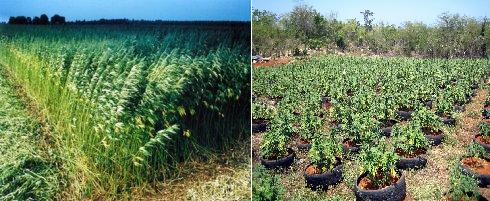 As you can see from the picture to the right, the difference in appearance and growing methods of hemp and marijuana are noticeably different to the naked eye, even to someone that doesn’t know much about botany. Also, industrial hemp farms would be licensed through the government, and their locations would be easily accessible through maps and databases. Law enforcement would know ahead of time where the fields are at, making it even easier to distinguish between the two.
As you can see from the picture to the right, the difference in appearance and growing methods of hemp and marijuana are noticeably different to the naked eye, even to someone that doesn’t know much about botany. Also, industrial hemp farms would be licensed through the government, and their locations would be easily accessible through maps and databases. Law enforcement would know ahead of time where the fields are at, making it even easier to distinguish between the two.
“Industrial hemp and feral ditchweed are grown closely together (rows are as close as 4 inches apart), it is grown in large multi-acre plots, it grows thin and tall, as tall as 20 feet high in many cases, has few branches or leaves below the tops, and is grown 108-120 days…Contrast that with cannabis: grown 6 feet apart, it is a shorter fatter bush with many branches, smaller plots with fewer plants, and is grown for 60-90 days.
There are differences in leaf structure that are apparent even after harvest, as most medicinal cannabis plants are either broad leafed with a 5 or 7 leaf pattern (cannabis Indica) or a tight bud or nugget with orange “hairs” (from an Afghani strain, preferable to growers because it is ready to harvest quickest, and their customers prefer it)…If every other police force in the industrialized world can tell the difference, I’m sure that when the time is appropriate POST or DEA or USDA or California AG or someone to whom it is important will provide the necessary information to show you the difference between the two.” according to the North American Industrial Hemp Council.
Marijuana growers will hide their plants in the hemp fields.
Cross-pollination between hemp and marijuana plants would significantly reduce the potency of the marijuana plants. “Hemp fields, in fact, could be a deterrent to marijuana growers. A strong case can be made that the best way to reduce the THC level of marijuana grown outdoors would be to grow industrial hemp near it. An experiment in Russia found that hemp pollen could travel 12 kilometers. This would mean that a hemp field would create a zone with a 12-kilometer radius within which no marijuana grower would want to establish a crop.
The reciprocal also applies. Growers of hemp seed would not want Cannabis of an “off type” (i.e., not the intended genetic type) mixing its pollen with their flowers. The isolation of genotypes is a common procedure used by the seed industry to preserve the genetic integrity of varieties. Valued strains are created by plant breeding, at substantial expense. Marijuana pollen would destroy this value.” – according to David P. West, Ph.D.
People will use hemp to get high.
In the film Hempsters it is stated that it would take a joint the size of a telephone pole to get high off of hemp. A person’s respiratory system simply wouldn’t allow it to happen. I couldn’t even smoke the smoothest marijuana joint the size of a telephone (although I would try!), let alone a harsh hemp joint, oh my.
“THC content in feral hemp is probably around 0-2 percent. Industrial hemp in Canada is 0.3 percent or less, and better commercial varieties of medicinal cannabis are up to 25 percent. Don’t buy the argument that 1 percent THC in hemp is enough to get high, because industrial hemp also has high CBD (cannabidiol, a cannabinoid in hemp) that is essentially a THC antagonist. More CBD means the THC is less effective, and hemp is highest in CBD and medicinal is lowest. So even if there is 1 percent THC in hemp, the CBD makes it useless to smoke. As for extracting the THC from hemp: why bother? If you can buy pot (even in your jail) for as low as $100/oz., why try and extract it at great cost and hassle? Just go down to the local park and buy real pot and save the inconvenience. It’s much like saying only people over 21 can buy potatoes, since kids might make vodka out of it!” – according to the North American Industrial Hemp Council.
Children will think since hemp is legal, that they should smoke marijuana.
How dumb do we think our children are? In one statement opponents of hemp will talk about how children are our future, then in regards to hemp they make statements that sound like our children are the stupidest creatures on the planet. I understand that children are impressionable, which is why we should tell them the truth, instead of lying to them and telling them that if they wear a shirt made out of hemp, then clearly they will be out on the playground later in the day hitting a five foot bong.
Children should be informed, so that when they grow up to be responsible adults they know how to make educated decisions for themselves. If a child is told all their life that hemp is harmful, and then the child finds out that it’s a lie, what message does that send to the child? Will the child believe their parent the next time their parent says that something is harmful? Or will little Timmy or Sally think, ‘they said hemp was bad and it’s not, so they probably lied about all other things that they said was harmful.’ That’s a very scary parenting tactic if you ask me, and I’m sure I’m not alone in thinking so.
Marijuana users could blame a positive drug-test result on hempseed oil or other hemp products.
This is argument shows just how desperate hemp opponents are. When people start coming up with ‘what if scenarios’ instead of factually based arguments, you know they are getting worn out by the argument. This is the best time to lay it on even thicker! As you will see below, consuming hemp products cannot lead to positive drug test for marijuana.
“The analyses showed that daily THC doses of 0.45 mg did not cause exceedance of the 50 parts per billion (ppb) cutoff used by federal programs to evaluate the outcome of immunoassay screening tests. Confirmation of these samples by GC/MS consistently found THCCOOH levels less than 5 ppb, with the exception of one sample confirmed at 5.2 ppb. This is significantly below the 15 ppb cutoff for confirmation under federal programs. THC doses as low as 0.2 mg/day caused several exceedances of the more stringent 20 ppb screening cutoff used by few employers and law enforcement agencies. Yet all of these samples were confirmed at less than 5 ppb. One of three volunteers consuming up to 0.6 mg/day of THC screened positive at the 50 ppb level but was confirmed at less than 5 ppb. The findings suggest that a conflict between hemp food consumption and workplace drug testing is most unlikely if THC levels in hemp oil and hulled seeds are maintained below 5 and 2 parts per million (ppm) respectively, and if drug testing programs follow federal guidelines requiring that any urine sample screening positive be confirmed by GC/MS.” – according to Leson Environmental Consulting
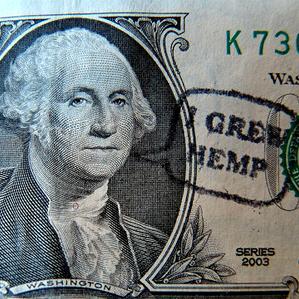 *Reasons Why EVERYONE Should Support Hemp Legalization*
*Reasons Why EVERYONE Should Support Hemp Legalization*
1) Hemp is among the oldest industries on the planet, going back more than 10,000 years to the beginnings of pottery. The Columbia History of the World states that the oldest relic of human industry is a bit of hemp fabric dating back to approximately 8,000 BC.
2) Presidents Washington and Jefferson both grew hemp. Americans were legally bound to grow hemp during the Colonial Era and Early Republic. The federal government subsidized hemp during the Second World War and U.S. farmers grew about a million acres of hemp as part of that program.
3) Hemp seed is nutritious and contains more essential fatty acids than any other source, is second only to soybeans in complete protein (but is more digestible by humans), is high in B-vitamins, and is a good source of dietary fiber. Hemp seed is not psychoactive and cannot be used as a drug (learn more at TestPledge.com).
4) The bark of the hemp stalk contains bast fibers, which are among the Earth’s longest natural soft fibers and are also rich in cellulose. The cellulose and hemi-cellulose in its inner woody core are called hurds. Hemp stalk is not psychoactive. Hemp fiber is longer, stronger, more absorbent and more insulative than cotton fiber.
5) According to the Department of Energy, hemp as a biomass fuel producer requires the least specialized growing and processing procedures of all hemp products. The hydrocarbons in hemp can be processed into a wide range of biomass energy sources, from fuel pellets to liquid fuels and gas. Development of bio-fuels could significantly reduce our consumption of fossil fuels and nuclear power.
6) Hemp can be grown organically. Only eight, out of about one hundred known pests, cause problems, and hemp is most often grown without herbicides, fungicides or pesticides. Hemp is also a natural weed suppressor due to fast growth of the canopy.
7) Hemp produces more pulp per acre than timber on a sustainable basis, and can be used for every quality of paper. Hemp paper manufacturing can reduce wastewater contamination. Hemp’s low lignin content reduces the need for acids used in pulping, and its creamy color lends itself to environmentally-friendly bleaching instead of harsh chlorine compounds. Less bleaching results in less dioxin and fewer chemical by-products.
8) Hemp fiber paper resists decomposition, and does not yellow with age when an acid-free process is used. Hemp paper more than 1,500 years old has been found. Hemp paper can also be recycled more times than wood-based paper.
9) Hemp fiberboard produced by Washington State University was found to be twice as strong as wood-based fiberboard. No additional resins are required due to naturally-occurring lignins.
10) Eco-friendly hemp can replace most toxic petrochemical products. Research is being done to use hemp in manufacturing biodegradable plastic products: plant-based cellophane, recycled plastic mixed with hemp for injection-molded products, and resins made from the oil, to name a very few examples. Over two million cars on the road today have hemp composite parts for door panels, dashboards, luggage racks, etc.
Countries Growing Industrial Hemp Today
The U.S. is the only industrialized nation in the world that does not recognize the value of industrial hemp and permit its production. Below is a list of other countries that are more rational when it comes to hemp policy.
AUSTRALIA began research trials in Tasmania in 1995. Victoria commercial production since1998. New South Wales has research. In 2002, Queensland began production. Western Australia licensed crops in 2004.
AUSTRIA has a hemp industry including production of hemp seed oil, medicinals and Hanf magazine.
CANADA started to license research crops in 1994. In addition to crops for fiber, one seed crop was licensed in 1995. Many acres were planted in 1997. Licenses for commercial agriculture saw thousands of acres planted in 1998. 30,000 acres were planted in 1999. In 2000, due to speculative investing, 12,250 acres were sown. In 2001, 92 farmers grew 3,250 acres. A number of Canadian farmers are now growing organically-certified hemp crops (6,000 acres in 2003 and 8,500 acres in 2004, yielding almost four million pounds of seed).
CHILE has grown hemp in the recent past for seed oil production.
CHINA is the largest exporter of hemp textiles. The fabrics are of excellent quality. Medium density fiber board is also now available. The Chinese word for hemp is “ma.”
DENMARK planted its first modern hemp trial crops in 1997. The country is committed to utilizing organic methods.
FINLAND had a resurgence of hemp in 1995 with several small test plots. A seed variety for northern climates was developed called Finola, previously know by the breeder code “FIN-314.” In 2003, Finola was accepted to the EU list of subsidized hemp cultivars. Hemp has never been prohibited in Finland. The Finnish word for hemp is “hamppu.”
FRANCE has never prohibited hemp and harvested 10,000 tons of fiber in 1994. France is a source of low-THC-producing hemp seed for other countries. France exports high quality hemp oil to the U.S. The French word for hemp is “chanvre.”
GERMANY banned hemp in 1982, but research began again in 1992, and many technologies and products are now being developed, as the ban was lifted on growing hemp in November, 1995. Food, clothes and paper are also being made from imported raw materials. Mercedes and BMW use hemp fiber for composites in door panels, dashboards, etc. The German word for hemp is “hanf.”
GREAT BRITAIN lifted hemp prohibition in 1993. Animal bedding, paper and textiles markets have been developed. A government grant was given to develop new markets for natural fibers. 4,000 acres were grown in 1994. Subsidies of 230 British pounds per acre are given by the government to farmers for growing hemp.
HUNGARY is rebuilding their hemp industry, and is one of the biggest exporters of hemp cordage, rugs and fabric to the U.S. They also export hemp seed, paper and fiberboard. The Hungarian word for hemp is “kender.”
INDIA has stands of naturalized Cannabis and uses it for cordage, textiles and seed.
ITALY has invested in the resurgence of hemp, especially for textile production. 1,000 acres were planted for fiber in 2002. Giorgio Armani grows its own hemp for specialized textiles.
JAPAN has a rich religious tradition involving hemp, and custom requires that the Emperor and Shinto priests wear hemp garments in certain ceremonies, so there are small plots maintained for these purposes. Traditional spice mixes also include hemp seed. Japan supports a thriving retail market for a variety of hemp products. The Japanese word for hemp is “asa.”
NETHERLANDS is conducting a four-year study to evaluate and test hemp for paper, and is developing specialized processing equipment. Seed breeders are developing new strains of low-THC varieties. The Dutch word for hemp is “hennep.”
NEW ZEALAND started hemp trials in 2001. Various cultivars are being planted in the north and south islands.
POLAND currently grows hemp for fabric and cordage and manufactures hemp particle board. They have demonstrated the benefits of using hemp to cleanse soils contaminated by heavy metals. The Polish word for hemp is “konopij.”
ROMANIA is the largest commercial producer of hemp in Europe. 1993 acreage was 40,000 acres. Some of it is exported to Hungary for processing. They also export hemp to Western Europe and the U.S. The Romanian word for hemp is “cinepa.”
RUSSIA maintains the largest hemp germplasm collection in the world at the N.I. Vavilov Scientific Research Institute of Plant Industry (VIR) in St. Petersburg. They are in need of funding to maintain and support the collection. The Russian word for hemp is “konoplya.”
SLOVENIA grows hemp and manufactures currency paper.
SPAIN has never prohibited hemp, produces rope and textiles, and exports hemp pulp for paper. The Spanish word for hemp is “cañamo.”
SWITZERLAND is a producer of hemp and hosts one of the largest hemp trade events, Cannatrade.
TURKEY has grown hemp for 2,800 years for rope, caulking, birdseed, paper and fuel. The Turkish word for hemp is “kendir.”
UKRAINE, EGYPT, KOREA, PORTUGAL and THAILAND also produce hemp.
UNITED STATES granted the first hemp permit in over 40 years to Hawaii for an experimental quarter-acre plot in 1999. The license was renewed, but the project has since been closed due to DEA stalling tactics and related funding problems. Importers and manufacturers have thrived using imported raw materials. 22 states have introduced legislation, including VT, HI, ND, MT, MN, IL, VA, NM, CA, AR, KY, MD, WV and ME, addressing support, research or cultivation with bills or resolutions. The National Conference of State Legislators (NCSL) has endorsed industrial hemp for years.
Bibliography
Chris Conrad, “Hemp: Lifeline to the Future”
Jack Frazier, “The Great American Hemp Industry”
Hemptech, “Industrial Hemp” and “Hemp Horizons”
– facts courtesy of the Hemp Industries Association


